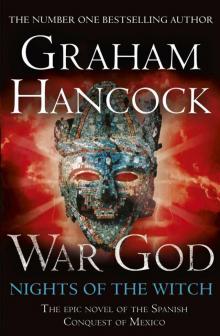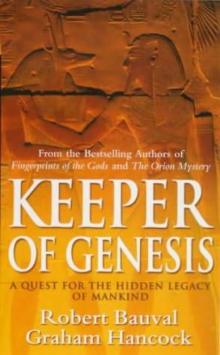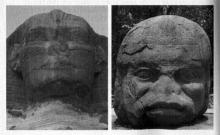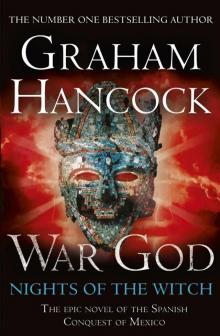- Home
- Graham Hancock
The Master Game Page 9
The Master Game Read online
Page 9
Fighting back
But the world is the way it has been, not the way it might have been, and the Cathars did not win. As we will see in Chapters Six and Seven, they lost everything – their lands, their culture, their freedom and their lives – in the blood-drenched horror of the Albigensian Crusades. Ravaging Occitania between 1209 and 1244,93 these were 35 years of virtually unremitting war – a brutal war of sieges and burnings and fearful massacres. Despite belonging to the ‘church of Love’, therefore, which ‘did violence to no man’,94 the very fact that a nation of vegetarian pacifists were able to resist the papal armies for so long tells us that they did not simply lie down and surrender when they were attacked. They fought back – tooth and nail.
This is by no means the only such paradox that Catharism offers. We've noted already that its doctrinal horror of sex (as the productionline that delivers new material incarnations for trapped souls to be reborn in) did not result in a concomitant change in reproductive behaviour in Occitania during the Cathar heyday. On the contrary Cathar families went on producing children in large numbers and the region enjoyed rapid population growth. The solution to the apparent paradox lies in the very different standards of behaviour expected of credentes and perfecti. The former adhered to the beliefs of Catharism but were not required to emulate the practices of its adepts.
We've seen how this system left credentes free to marry, make babies and eat meat as they chose. By the same token, despite its pacifism, it also left them free to resist persecution, and to defend their country and their faith with force of arms – even if doing so required them to commit acts of ‘violent intervention in the fate of other souls’. The perfecti themselves seem always to have stood back from the fray, leaving the actual job of fighting the enemy to the credentes. Still there is evidence, in the face of pitiless Catholic aggression and mounting atrocities against Cathars, that even the perfecti found reason to qualify their philosophy of absolute pacifism and nonviolence. Since this world was the creation of the Evil God, and the material realm was fully in his power, it followed that he could create beings of pure evil – demons who merely looked like humans but had no souls – to destroy the Good Men and Good Women of the Cathar faith. To fight against such beings, who were numerous in the crusading armies and amongst the inquisitors, was hardly a crime.95
The ancient enemy
So in defending themselves against the murderous assault of the Albigensian Crusades, Cathars came to feel vindicated in their beliefs. The Catholic Church was the instrument of an Evil God who had created the material world as his personal fiefdom of suffering and horror, pain and misery. Now day by day in Occitania there was ever more compelling evidence for the accuracy of this proposition: the massacres repeatedly unleashed upon the civilian population; the tortures and the informer culture devised by the Inquisition; the endless holocaust of the Cathar faithful.
The scale, ferocity and sheer thoroughness of the Crusades are of course a measure of the threat that the Church perceived in Catharism. We already knew that the military support given to the Cathars by the great lords of Occitania had triggered this perception of danger. But as we looked through the heresiological literature of the period, we could not fail to note that something else, perhaps almost equally potent, seemed to have been at work at well.
For although the scale of the Church's response was new – indeed unprecedented – the Catholic authorities clearly recognised Catharism as an old and deadly enemy. It was for this reason that they so often referred to the Cathars as ‘Manichees’, a heresy over which Rome had supposedly triumphed centuries before. For their part, though they would never have identified themselves as ‘Manichees’, the Cathars claimed that their religion had come down to them from antiquity, ‘passed from Good Man to Good Man’. It was, they said, the true faith that the Church had usurped in the early days of Christianity.
Most medieval scholars today prefer to argue that Catharism was essentially a new phenomenon and very much the product of its times. But neither of the protagonists in this affair, Catholics or Cathars, thought this was the case. They believed themselves to be caught up in the latest episode of an ancient struggle of profound consequence for the future of mankind.
In the next chapters, with due respect to the opinions of the experts, we will investigate the possibility that the protagonists could have been right.
CHAPTER THREE
WHERE GOOD AND EVIL MEET
These are they who … fell from Paradise when Lucifer lured them thence, with the lying assurance that whereas God allowed them the good only, the Devil (being false to the core) would let them enjoy both good and evil; and he promised to give them wives whom they would love dearly; and that they should have authority over one another, and that some amongst them should be kings, or emperors, or counts; and that they would learn to hunt birds with birds, and beasts with beasts.
Cathar Prayer 1
Up till now we have been able to treat the problem of the Cathars as if their heresy existed in isolation. Of course this was not the case. They posed a massive threat to the Church of Rome on the basis of their success in nearby Occitania and northern Italy. But they were in fact part of a much larger heresy that threatened the entire Christian establishment in Europe – not only the Roman Catholics in the West but also the Orthodox Church of the East based in Constantinople (ancient Byzantium, known today as Istanbul).
The Catholic/Orthodox schism had been developing for centuries and became official in AD 1054. By that date the former bishops of Constantinople had already long been in the habit of calling themselves ecumenical patriarchs – literally ‘patriarchs of the entire inhabited world’.2 Since this seemed to challenge the pope's own claim to the top job it was a source of great mutual hostility. Nevertheless both churches were of one mind on the subject of heresy – which was to be stamped out.3 And just as Rome faced the heresy of Catharism in the West in the 12th and 13th centuries, so too, and for rather longer, the patriarchate in Constantinople confronted the heresy known as Bogomilism in the East which began its period of expansion some 200 years earlier and survived until the end of the 14th century.
It was called ‘Bogomilism’ after its supposed founder whose name in Greek was Theophilis and in Slav Bogomil – meaning ‘Beloved of God’.4 Active in Bulgaria in the first half of the tenth century, this enigmatic individual preached a form of dualism that was identical, in almost every detail, to the creed that would later be introduced into Western Europe as Catharism. Hand in hand with these spiritual teachings, he is also remembered as the organiser of a political rebellion that gave the persecuted Slav peoples a voice and incited them to withdraw their labour and fealty from their Graecized Bulgar overlords.5
Although the Bogomil heresy endured in the East for three centuries longer than Western Catharism there is little reliable information about Bogomil himself. Not a single contemporary reference to him has come down to us and we know nothing about where or when he was born or died, who his teachers were, or how widely he preached.6 The earliest-surviving report to mention him by name (although it is not the earliest to notice the heresy he started7) appears in a book written at some point between AD 977 and AD 990.8 The work of a hostile Christian monk named Cosmas, this tract tells us only that: In the days of the Orthodox Tsar Peter [AD 927 – 969] there lived … a priest called Bogomil (Loved of God), who in reality was not loved of God (Bogu ne mil ), who was the first to sow heresy in the land of Bulgaria.9
Though it supplies no more information about the man himself, Cosmas's book was written specifically to denounce the faith that Bogomil had founded. His purpose was to draw the attention of the Orthodox Church to the threat it faced, and to upbraid Church authorities for the lapses that had permitted such a heresy to flourish.10
Close to the sources of power
In the years following the death of Tsar Peter in AD 969 Bogomilism spread rapidly westwards out of Bulgaria into the Balkan principalities of Serbia and Bosnia (wh
ere it fared so well that it was frequently the official state religion).11 Equally influential in Croatia, Dalmatia and Macedonia, it also extended its grip into the heart of the great city of Constantinople itself,12 headquarters of the Orthodox Church of the East. The first account of Bogomilism being practiced within the walls of Constantinople dates from 1045. It is found in a letter written by the monk Euthymius of Periblepton – who even claimed to have discovered a heretical ‘cell’ in his own monastery.13
Cosmas I (1075 – 81) was the first emperor of Constantinople to take stern action against the Bogomils.14 His successor, Alexius I Comnenus (1081 – 1118) was even more vehement in his attacks on the heresy. At an uncertain date between 1097 and 1104 he ordered the arrest of a known Bogomil named Diblatus who was tortured for information about key figures in the movement. The trail led to Basil, a renegade monk from Macedonia, now living under cover at a monastery in Constantinople, who was said to have been a Bogomil evangelist for more than 40 years.15
Next Comnenus set a trap for Basil. Pretending only to know of him as a respected Orthodox monk, the emperor innocently asked for enlightenment about the Christian faith. Human nature being what it is Basil could not pass up this apparently golden opportunity and set out to try to convert Comnenus to Bogomilism. A series of meetings followed in which the emperor thoroughly debriefed the unfortunate Basil, getting him to reveal not only the central doctrines of the heresy but also compromising details of its organisation and membership in Constantinople.16
Basil and his associates were then arrested and contemporary accounts tell us that Comnenus reasoned in person with the Bogomils, trying to win them back to the Orthodox faith. Those who recanted were pardoned and released. Those who would not recant were imprisoned for life. Only Basil, on this occasion, suffered the extreme penalty – so much favoured by heresy hunters in the West – of being burnt to death. His stake was set up in Constantinople's Hippodrome for the edification of a large crowd.17
Surviving records from Constantinople say nothing more about Bogomilism until the 1140s when there are reports of more heresy trials.18 Then in 1145 we learn that no less a figure than Cosmas Atticus, patriarch of the Orthodox Church, has fallen under the spell of a certain Niphon, a Bogomil. When – horror of horrors – the heretic was allowed to take up residence in the patriarchal palace other ecclesiastics began to agitate against him. Eventually they took their complaints directly to Emperor Manuel I (himself later rumoured to have had covert ‘Bogomil tendencies’) and in 1147 Cosmas was deposed and Niphon arrested.19 Still the episode indicates that by the mid-12th century, at about the time that Catharism was first detected in the West, Bogomilism had grown from a minor cult started by an unknown priest into a major religion that could position itself close to the sources of power in the East.
Papa Nicetas
This sense of a big faith on the move, taking shape, growing in confidence and building up structure before our eyes, is heightened 20 years later in 1167. In that year, seemingly out of the blue, Nicetas, a senior Bogomil bishop from Constantinople, suddenly turned up in the West. He arrived first in Lombardy in northern Italy where he persuaded the local Cathar bishops to adopt important doctrinal changes and to be ‘reconsoled’ at his hands.20 Then he moved on to the Languedoc.
The entire Cathar administration of Occitania had gathered to await his presence at the small town of Saint-Félix-de-Caraman near Toulouse. Under his guidance routine matters such as boundary disputes amongst the existing Cathar bishoprics were resolved and three new dioceses of Toulouse, Carcassonne and Agen were established.21 As in Lombardy, however, the primary purpose of Nicetas’ visit seems to have been to urge important doctrinal changes upon the Cathars and to reaffirm what were clearly by this stage well-established links between the Cathar and Bogomil churches.22 Indeed the immense respect shown to Nicetas, and the fact that he once again ‘reconsoled’ all the perfecti present, tell us very clearly that the relationship between these two churches was that of a senior to a junior, or a father to a son. The Cathars of 1167, in other words, clearly regarded Bogomilism as the ‘home church’ to which they owed their allegiance.
This conclusion is endorsed by modern historians who have amassed persuasive evidence that the Catharism of the West was indeed a direct offshoot of Bogomilism.23 Although northern Italy is closer to Constantinople the heresy seems to have been brought to northern France and even to Germany first (a report has survived of the trial of a Cathar bishop in Cologne as early as 1143).24 When it reached the Languedoc, and by what route, is not certain but it had clearly been present long enough by 1167 for bishoprics to have been established and boundary disputes to have broken out.
It seems, however, that there must also have been some doctrinal lapse amongst the Western Cathars which the doctrinal changes introduced by ‘Papa’ Nicetas were designed to correct. These brought Catharism into line with his own powerful faction of the Bogomil church which believed in the absolute opposition of the ‘two powers’ of Good and Evil.25 By contrast there were other Bogomils, and prior to 1167 many Cathars too, whose beliefs compromised this pristine polarity. These so-called mitigated dualists contemplated linkages, and even family relationships, between the Good God and the God of Evil, something that absolute dualists were not prepared to do.
Another objective of Nicetas's visit was to organise further missionary activity throughout Europe, using Occitania as a bridgehead. There is evidence that delegates left the 1167 Council of Saint-Félix invigorated and actively anticipating the prospect.26
Social engineering
In the decades after Nicetas at the close of the 12th century the Cathar and Bogomil churches begin to look increasingly as though they are involved in a well-planned and coordinated plot.27 The purpose of this plot could not have been more revolutionary: to compete with and eventually to overthrow the Church of Rome and the Orthodox Church of the East. The absurd worship of the Evil God who had made this world was to be undermined – not all at once but slowly, city by city, region by region. The true dualist religion of the Cathars and the Bogomils was to be introduced in its place. The fundamental aim of the project was to free the souls of all mankind from the prison of matter and allow them to return to the heavenly realm of the Good God who had made them. Since this would require an attitude towards material things radically different from the dominant interests of the times it was obvious that permanent changes in the structure of society would also be necessary.
For us as researchers, this issue was clarified when we discovered that the Cathars in Occitania had involved themselves quite extensively in what we described in the last chapter as ‘meddling with the feudal economic order’.
It seemed unlikely to be a coincidence when we learned that the Bogomils did exactly the same thing. From the earliest references in 10th century they are linked with social, economic and political upsets. ‘They teach their followers not to obey their masters’, warned the monk Cosmas in his expose of the abominations of this seemingly new heresy: … they scorn the rich, they hate the Tsars, they ridicule their superiors, they reproach the Boyars, they believe that God looks in horror on those who labour for the Tsar, and advise every serf not to work for his master.28
Confronted by material like this it is little wonder that many historians have judged Bogomilism to be ‘at base … a social movement, directed against feudal oppression.’29 Others disagree and argue that we should ‘beware of attributing too much importance to the social anarchism of the Bogomils or of seeing in them Slavonic communists of the Middle Ages.’30 In our opinion neither view is quite correct. The Bogomils were not early communists – or any such thing – since communism is a wholly materialist ethic concerned only with the material world. Neither were they ‘at base’ a social movement. Exactly like Catharism, the evidence convinces us that the Bogomil religion was first and last a spiritual movement, interested exclusively in the liberation of souls. It was the efficient pursuit of this spiritual objective, rather
than any of the normal characteristics of a ‘social movement’, that led the Bogomils inevitably towards revolutionary behaviour in the material world. It inspired a critical attitude towards earthly hierarchies and put a new mood of intelligent rebelliousness into the air.
The same phenomenon of ‘social engineering’ running alongside dualist heresy was observed in other parts of Europe as well. In Occitania and France we showed in the last chapter how the Cathars busied themselves in the education of a skilled artisan-class – notably weavers and others involved in the cloth and paper trades. In this way empowerment of the poor through skills-training went hand-in-hand with the spread of the faith. We were therefore not surprised to learn that researchers in Italy have unearthed proof of significant links there between Catharism and the trade of pursemaking. Like weaving, this was an occupation that could provide suitable cover for missionary activities enabling Cathar evangelists to travel incognito ‘making and selling their wares and at the same time making heretical contacts.’31
So, although the dualists professed to hate this world, such strategies show that they did not hesitate to use rather worldly and ‘street-wise’ methods to win converts from the established Christian Churches. After travelling amongst the Italian Cathars in the early 13th century Ivo of Narbonne reported that they routinely: … sent to Paris capable students from nearly all Lombard and some Tuscan cities. There some studied logic, others theology, with the aim of strengthening their own error and overthrowing the Catholic faith.32

 Underworld: The Mysterious Origins of Civilization
Underworld: The Mysterious Origins of Civilization The Master Game: Unmasking the Secret Rulers of the World
The Master Game: Unmasking the Secret Rulers of the World America Before
America Before Entangled
Entangled War God: Nights of the Witch
War God: Nights of the Witch War God: Return of the Plumed Serpent
War God: Return of the Plumed Serpent The Message of the Sphinx AKA Keeper of Genesis
The Message of the Sphinx AKA Keeper of Genesis Fingerprints of the Gods
Fingerprints of the Gods The Sign and the Seal
The Sign and the Seal The Mars Mystery: The Secret Connection Between Earth and the Red Planet
The Mars Mystery: The Secret Connection Between Earth and the Red Planet Magicians of the Gods: The Forgotten Wisdom of Earth's Lost Civilization
Magicians of the Gods: The Forgotten Wisdom of Earth's Lost Civilization War God
War God Underworld
Underworld The Mars Mystery
The Mars Mystery Magicians of the Gods
Magicians of the Gods The Master Game
The Master Game